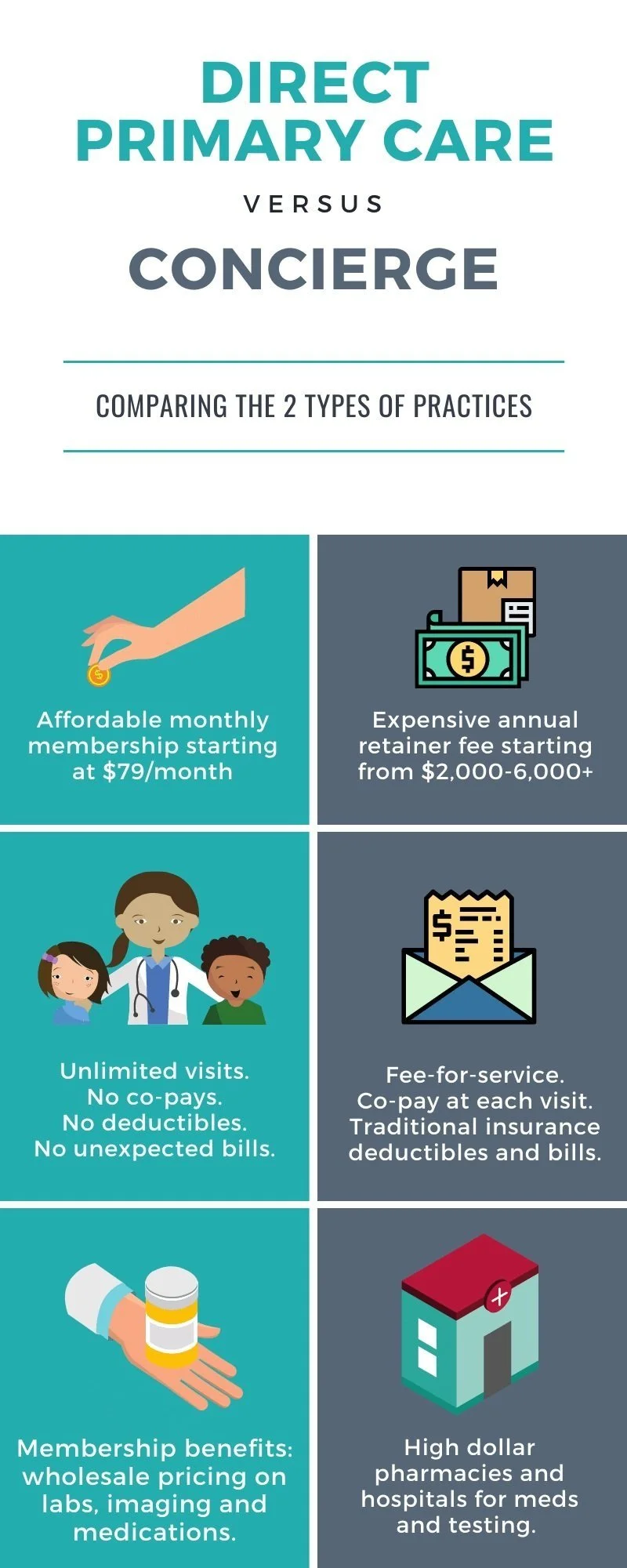What is the difference between direct primary care and concierge medicine?
Direct primary care (DPC) and concierge models have similar attributes when it comes to service, but have a variety of fundamental differences when it comes to price and other benefits.
Direct Primary Care of Oklahoma is membership based health clinic committed to providing comprehensive, affordable family medicine care. You deserve a health care model that puts your needs first, we can help.
Concierge Medical Practices
Concierge medicine was created out of the patient desire for better access to their doctor and more personalized care. Concierge medical practices charge an annual fee (typically starting from $2,000-6,000 per individual) which allows patients access to same-day appointments and 24/7 telephone or telehealth services. In addition to this annual retainer fee, the concierge practice also bills insurance companies for visits and services provided. Patients are paying the large retainer fee on top of the traditional fee-for-service insurance billing.
Direct Primary Care
Direct primary care builds upon the model created by concierge practices, but moves away from insurance completely. It provides the same type of access seen in concierge medicine, but at a more affordable price. Similar to concierge, direct primary care practices charge a monthly fee for a suite of primary care services and increased access to their physician. Unlike concierge medicine, the membership fee is more comprehensive by covering unlimited visits to the practice without charging additional copays or insurance bills.
Direct primary care practice panels are significantly smaller than a traditional practice, but may be slightly larger than concierge practices. DPC practices typically have between 600-800 patients, compared to 2,500+ in a traditional primary care practice. Some practices in the concierge model have as low as 200 patients.
Concierge vs DPC comparison overview:
(1) Membership Fee: In concierge medicine, there is an expensive retainer fee with an annual contract. In direct primary care, patients pay a lower monthly membership that may be discontinued at any time.
(2) What the Membership Fee Covers: In concierge medicine, the retainer fee covers increased access to the doctor and an in-depth physical with screenings that go beyond what a traditional insurance program would support. Direct primary care members also get increased access and comprehensive care. The DPC membership also covers unlimited patient visits and services that would traditionally be billed to the patient after the visit. Additional direct primary care membership benefits include access to exclusive cost saving pricing on medications, labs, imaging, and medical procedures.
(3) Cost: Concierge medicine membership fees tend to be much higher than DPC membership fees. Direct primary care membership fees are usually priced on a sliding scale, where younger patients pay less than older patients. Sometimes family rates are available.
(4) Third Party Payers: Most traditional concierge medicine physicians continue to accept insurance plans and patient visits are billed in the traditional manner. In DPC, the doctor does not accept third party reimbursements. The membership fees paid by the patients cover basic visits, and some special services are charged separately at a wholesale rate.
Direct Primary Care of Oklahoma brings you the best health care experience - and we're making it incredibly easy, convenient, and affordable.
For your health,
Terry Rimmer, MD
Get the latest health news and updates sent directly to your email for free!




